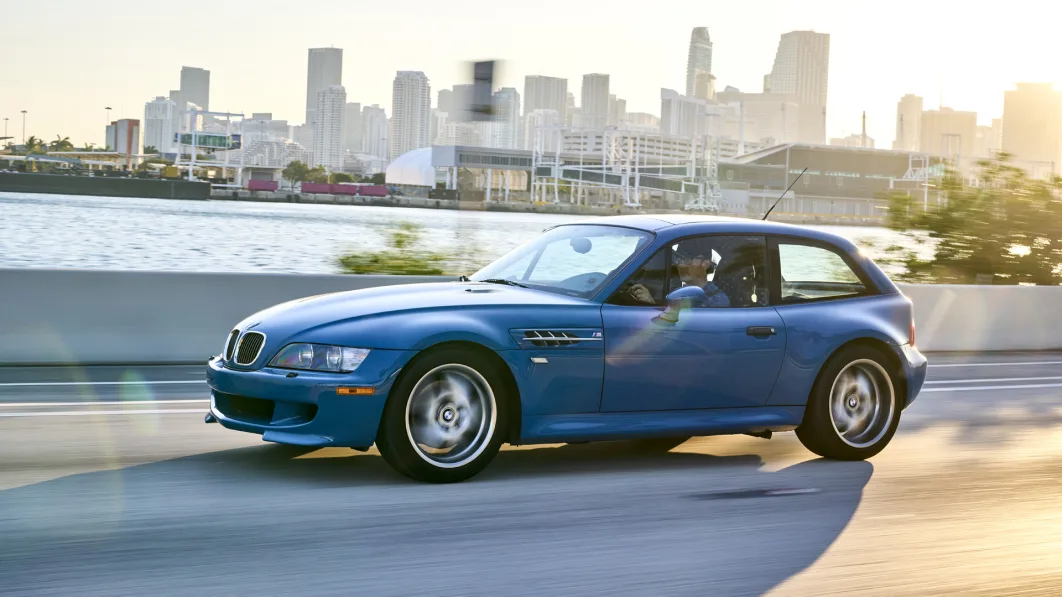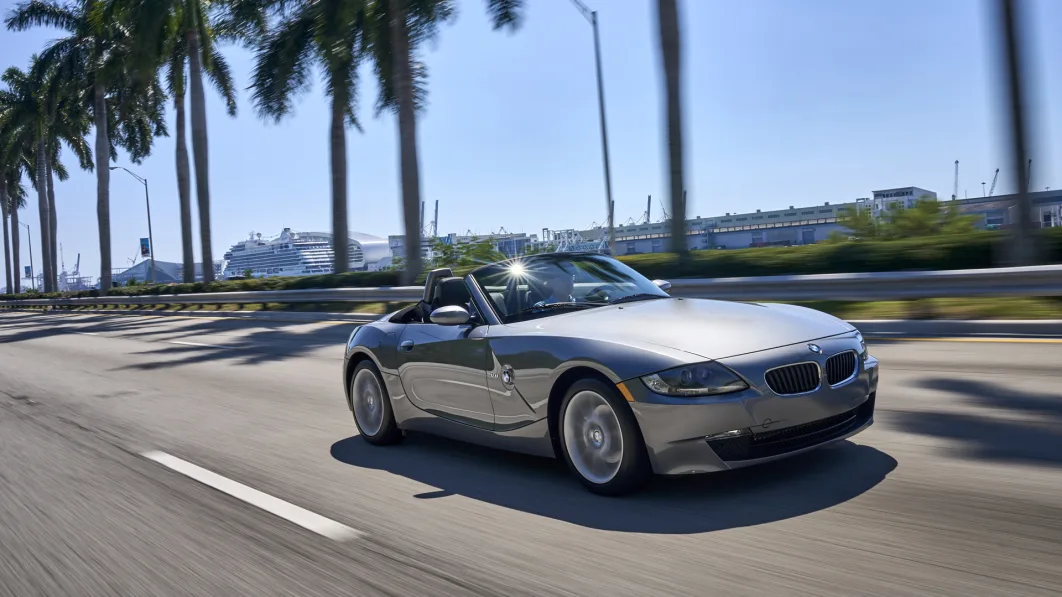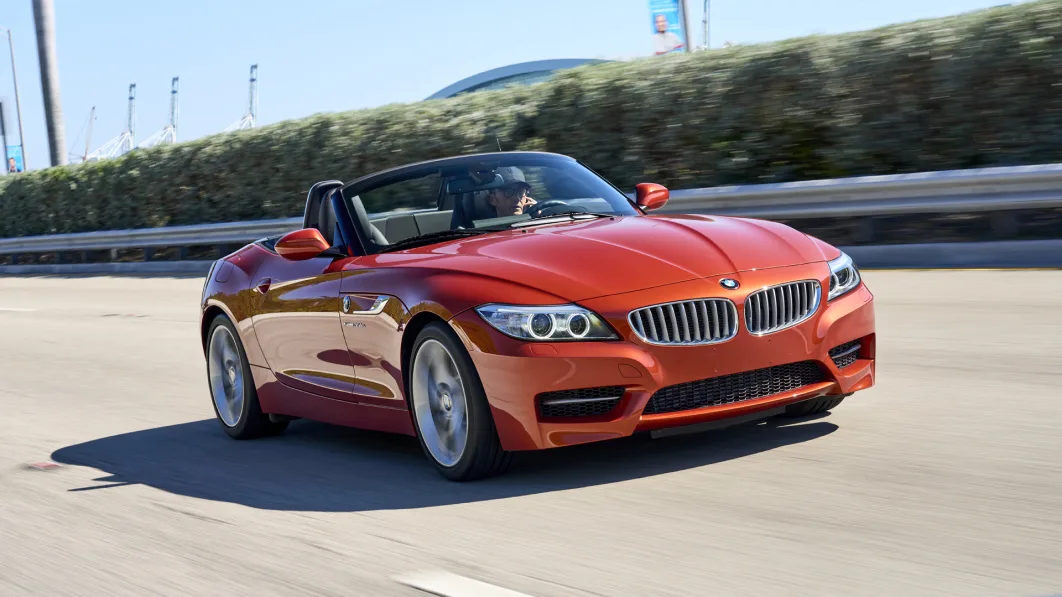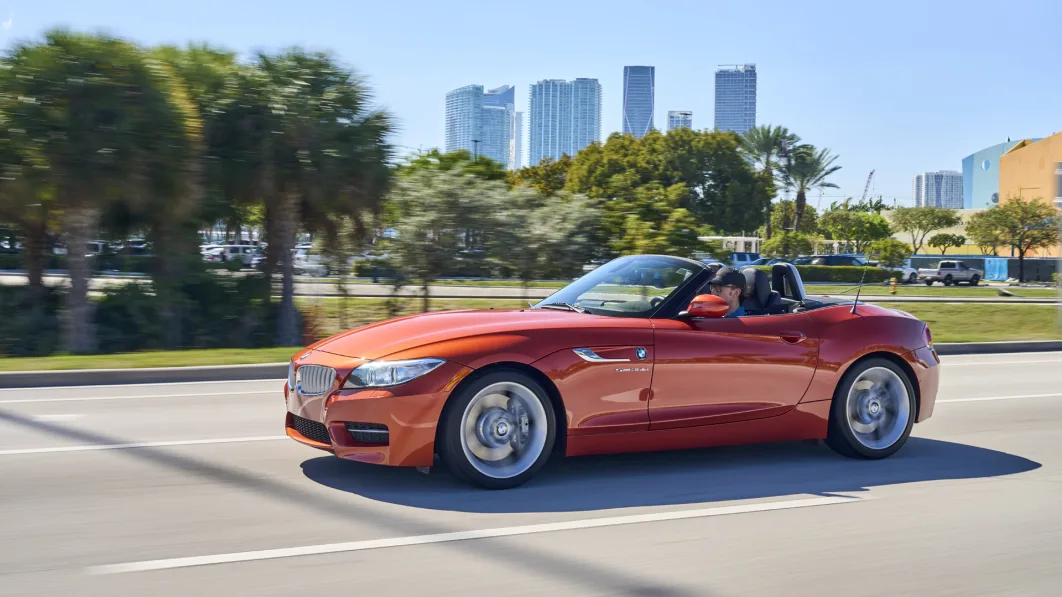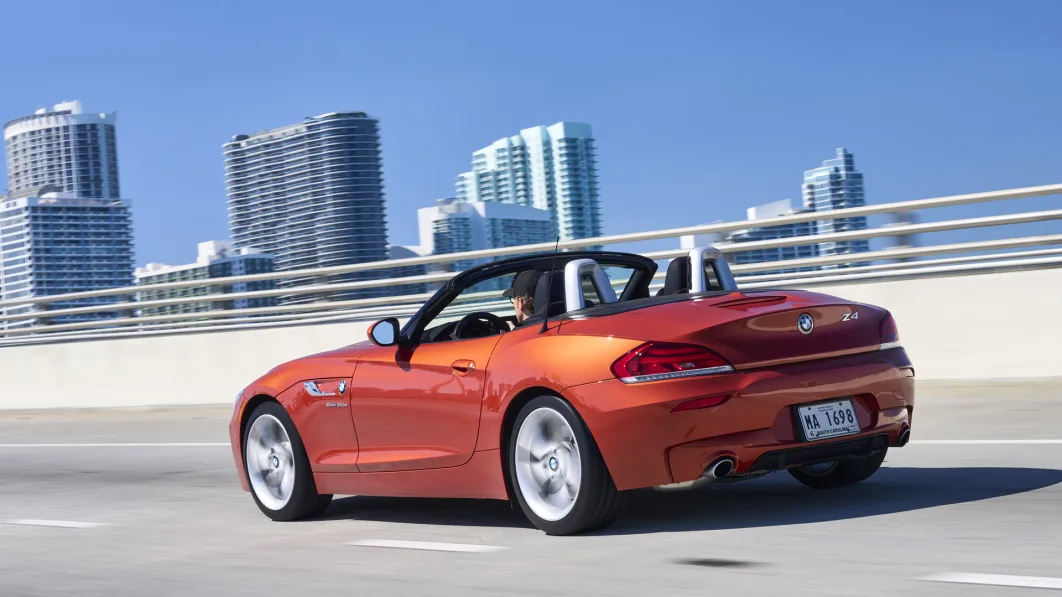MIAMI — Look, much as I enjoyed driving the updated 2023 BMW Z4, I’m not going to lie and tell you it’s as lithe and nimble as the original Z3 that stole our hearts in the 1990s. Today’s Z4 is a good and perfectly competent car, but it has more of a luxury grand tourer vibe than outright sports car. It’s also a niche player in a dying segment, and honestly, if it wasn’t for BMW being able to share development costs with Toyota (hey there, Supra), there wouldn’t even be a new Z4 at all.
So since the future of the Z4 is a little gloomy – did I mention BMW only sold 1,567 of them last year? – let’s shine some light on its storied past. And what better way to do so than by driving a handful of holy-smokes-that’s-pristine examples from BMW’s private collection? From Z3s to Z4s to M Coupes and beyond, this Bavarian greatest-hits catalog proves BMW’s little two-seater has had a hell of a run.
The BMW Z3 was an instant hit
The original E36/7 Z3 made a cameo in the 1995 James Bond film “GoldenEye” (though it should’ve also been in the Nintendo 64 game, just sayin’), and for a lot of people, it was love at first sight. There was strong initial demand, with some 15,000 orders placed by the time it actually went on sale. Personally, this generation Z3 remains my favorite to this day. And fun fact: It was the first BMW to be manufactured exclusively outside of Germany – in South Carolina, no less.
Four- and six-cylinder powertrain options were offered, with four-speed automatic and five-speed manual transmissions. Combined with a classic front-engine, rear-wheel-drive layout, this made the Z3 a spry and tossable roadster – a sort of more luxurious take on the Mazda MX-5 Miata.
One of the earliest roadsters BMW has in its collection is a green-over-tan Z3 1.9, making a modest 138 horsepower and 133 pound-feet of torque. This was the engine the Z3 launched with, and it isn’t exactly well loved, mostly because it’s not as powerful or smooth as the straight-six options. Still, there’s a high-revving nature to the Z3 1.9 that makes it entertaining in an unexpected way. Having less weight over the front end is a good thing, too.
In 1999, the Z3 received a mid-cycle update, with the most obvious tell being a more curvaceous rear end with L-shaped taillights. But the best new-for-2000 option was the 3.0-liter naturally aspirated I6 engine, offering 228 hp and 221 lb-ft of torque (an upgrade over the outgoing 2.8-liter’s 189 hp and 203 lb-ft). BMW has one of these in its fleet, complete with a five-speed manual transmission, and this Z3 is a total peach. Smooth power delivery, plenty of low-end torque and crisp shifts – once you get used to the super high take-up point of the clutch – make it a car you can’t help but adore.
If BMW hadn’t brought any M variants to this test drive, the Z3 3.0i would’ve been my favorite. Rewarding steering, perfect arm-on-the-door beltline height, a sweet engine … I could go on forever.
But then came the ‘Clown Shoe’: Meet the BMW Z3 Coupe
I genuinely believe the BMW Z3 Coupe is one of the most iconic and best designs from the turn of the millennium. Like, it’s up there with the Audi TT. The shooting brake-style hatchback is perfect, and it really exaggerates the Z3’s generous dash-to-axle ratio. And those hips. Those hips. Seriously, there isn’t a single bad angle.
It’s said that the Z3 Coupe was born from the minds of a group of engineers who worked on the project outside of normal business hours, so three cheers for those nerds. Crucially, the extra structural rigidity of the hatchback made the Z3 Coupe nearly three times stiffer than the Z3 Roadster, and you can genuinely feel a difference on the road. Where a Z3 can occasionally feel soft, the Coupe snaps it in line.
You could get the Z3 Coupe with the same 2.8-liter and 3.0-liter inline-six engines as the roadster, and while this car is plenty desirable, it’s hard to ignore the allure of the more powerful M Coupe (“Z3” was not officially part of the name). Based on the M Roadster that debuted for 1998, the M Coupe initially used BMW’s 240-hp 3.2-liter S52 inline-six engine, but for its final years (2001 and 2002) borrowed the upgraded S54 3.2-liter inline-six from the just-introduced E46 M3, boosting output to 315 hp and 251 lb-ft of torque.
I’d pretty much decided going into this test drive that if I couldn’t easily secure some time in the M Coupe, I’d have to kneecap one of the other journalists. This isn’t just the best version of the Z3, it’s my favorite BMW ever built, period. I could drive this Laguna Seca Blue M Coupe every day for the rest of my life and be happy as a clam. Sometimes it’s OK to meet your heroes.
The straight, boring-as-hell roads of Florida do not do the M Coupe justice. This car begs for tight curves and high-revving corner exits. But at the same time, it’s totally happy to just cruise along in fifth gear at … uh, not the posted speed limit. It even has a cup holder that fits a Dunkin’ Donuts iced coffee. Try doing that in other early 2000s German sports cars.
After Z3 came Z4
The original E85 Z4 produced from 2002 to 2008 came straight out of the love/hate Chris Bangle era of BMW designs, and if I’m honest, I think it’s aged horribly. Some specs look better than others, of course – the Z4 M Coupe is an obvious bit of brilliance – but these cars just don’t do it for me aesthetically. No, not even with the cool Z-shaped creases on the sides.
BMW sold a four-cylinder Z4 outside the United States, but here, we only got the 2.5-liter and 3.0-liter inline-six engines, with automatic or manual transmissions, as well as the godawful six-speed SMG automated manual in later years. The most powerful non-M model was the Z4 3.0si introduced for 2006, which had 261 hp and 232 lb-ft of torque, while the now-officially-in-the-name Z4 M Roadster and Z4 M Coupe used a 3.2-liter inline-six with 338 hp and 269 lb-ft.
Notable features of the original Z4 included a flip-up infotainment screen with built-in navigation, part of BMW’s early iDrive infotainment suite. And because of the success of the Z3 Coupe, a Z4 Coupe was in the cards all along, with a more exaggerated sloping hatchback and double-bubble roof.
The E85 Z4 is a much larger car than the Z3 and you can feel that from behind the wheel. It also has a more sophisticated multilink rear suspension adapted from the 2000s-era E46 3 Series, compared to the Z3’s semi-trailing design borrowed from the 1980s-era E30 3 Series. An aluminum hood and magnesium roof frame were used to reduce weight. The Z4 was also the first BMW roadster to get things like electronic power steering and variable valve timing engine technology, though the M variants continued to use an older hydraulic steering setup, for better communication and more direct response.
The next BMW Z4 was better
I feel like everyone forgets about the E89-generation Z4 (2008 to 2016), but I suppose I can see why. There was no M version, and because this Z4 had a power-folding hardtop, there was never a proper coupe. I think these cars still look great, but they just don’t stand out the way the Z3 and original Z4 did – even in bright colors.
BMW offered everything from a 2.0-liter turbo inline-four engine with stop/start to more powerful naturally aspirated inline-six models. But the version the company brought to Miami to drive was a later, 2011 Z4 sDrive35is – yep, that’s when we started using the washing machine naming system – which was the closest thing BMW made to a Z4 M for this generation. In the 35is, a twin-turbo 3.0-liter inline-six made 335 hp and 369 lb-ft of torque, but it was only paired with a seven-speed dual-clutch automatic transmission. Sad trombone. All that torque came on super low, from just 1,500 rpm, allowing the 35is to accelerate to 60 mph in a BMW-estimated 4.8 seconds.
I like driving this car, but not as much as its predecessors. This DCT really shows how far these transmissions have come in the past decade-plus. The Z4 35is can be a little jerky while initially engaging first gear, and you’ll feel the occasional clunky up- and downshift at speed. At least the chassis is nice, and why wouldn’t it be, considering this Z4 shares its bones with the E82 1 Series and E92 3 Series, both of which are great cars.
Which brings us to the 2023 BMW Z4
The new Z4 should really feel like a culmination of everything BMW learned during its decades of roadster (and coupe!) production, but it doesn’t. Again, that’s not to say the Z4 is a bad car, it’s just … different.
There’s still plenty of verve left in the Z4, though. Strong turbocharged engines and a super-nice interior make this roadster really nice to drive. And more than any of its predecessors, this Z4 feels like a car you really could use every day, rather than a second car you only take out on weekends.
Would BMW customers respond better to a more focused Z4, similar to the Z3s of yore? Maybe. But honestly, probably not. So I suppose it’s a good thing the used car market is rife with great examples of BMW’s prior Zs. Which reminds me, I have an Evergreen clown shoe to find.

